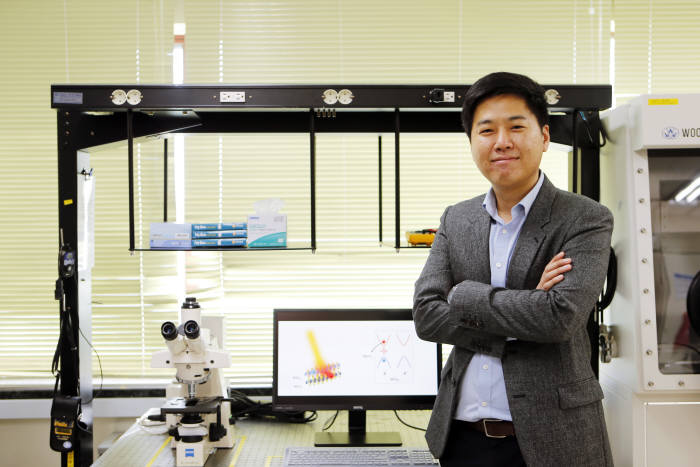
POSTECH Professor Kim Jong-hwan claims that the new discovery will enable valley currents to be created effectively and distributed afar. (image: POSTECH)
POHANG, May 25 (Korea Bizwire) — New technology could make it possible to elevate the performance of semiconductors, as development in the area has remained stagnant in recent years.
Spintronics and valleytronics are the latest technologies that could play a significant role in developing next generation semiconductors.
Spintronics is the study of an electron’s spin and its associated magnetic moment that helps increase semiconductor performance, while valleytronics technology makes use of the wavelike motion of electrons.
Until recently, it had been difficult to create spin-valley currents that would successfully activate semiconductor devices.
A research team at Pohang University of Sciences and Technology (POSTECH), however, has discovered a solution that may open a new frontier of semiconductor production.
According to POSTECH, Professor Kim Jong-hwan along with Associate Professor Feng Wang of UC Berkeley and his research team revealed that transition metal dichalcogenides (TMDC) such as tungsten disulfide were able to create spin-valley currents.
The joint research team found that when TMDC materials were made into heterostructures, polarized laser light could effectively create spin-valley currents.
In addition, the team was successful in measuring the length and degree of the traveled current for the very first time.
The results of the research were published in the most recent issue of “Science,” the international journal. Prof. Kim claims that the new discovery will enable valley currents to be created effectively and distributed afar.
“The entire industry is interested in the findings, as spin-valley currents could be used as a source technology applied in many areas,” he added.
M. H. Lee (mhlee@koreabizwire.com)






